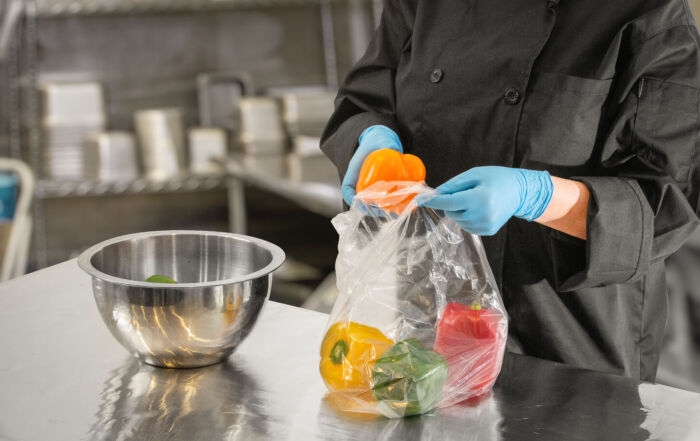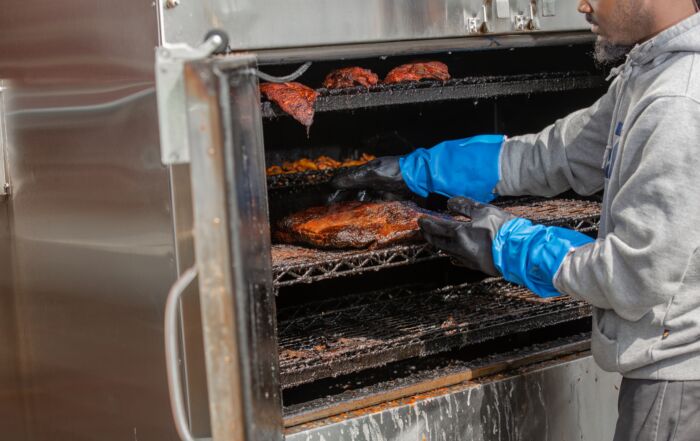Training – The Answer to Everything?
Will training of staff fix everything that is wrong with the workplace? Well, not really, although it certainly is identified often enough as the silver bullet! Someone not doing something the right way? Send them for training (or retraining!) As Dr. Kevin Roberts covered in the recent SafeBites Webinar about development of the workforce, training staff is key in building a strong food safety culture in any foodservice operation.
This first blog for April will address the fundamentals of training.
Later this month, the second blog will focus on some “how to’s” that you might
use. Often the Person-in-Charge (PIC), who is knowledgeable about food safety and
has earned a Certified Food Protection Manager Credential, is designated as
responsible for employees’ safe food behavior. Yet, the PIC may not have any
guidance on how to communicate expectations or information. Simply knowing
correct behaviors doesn’t mean all of your staff will know them. That is why
BOTH training and follow-up coaching are needed. That requires monitoring employees’ work
actions and retraining as needed.
We can all agree that training is an important part of
managing any foodservice operation, but don’t be overwhelmed if it is your responsibility.
With good planning, training doesn’t have to be overwhelming.
As with most successful ventures, the fundamentals of
effective training begin with planning. Planning
involves thinking about the What, Who, When, Where, How, and Why of the
training. Identifying content to be covered and desired outcomes for the
session is similar to planning a road trip. First you identify where you want
to go, why you are going, and what you want to do once you get there – right?
So with a training session, identify the topic, why it is important, and what
you want staff to take away. What is it you want the staff to know, do, or say
as a result of the training? Educators identify these as goals and objectives.
Ideally, these are measureable or observable so that the PIC knows whether the goals
have been met, and the take away’s are put into action. Recognize that training
sessions should not overwhelm attendees so keep the content streamlined. As
professors for many years, we both often fell into the “sage on the stage” trap,
going on and on (and on and on) about related matters, just because wethought they were important. But, it is
more important to focus on a few key points in any training and not overwhelm
staff. Keep it simple!
Use your written standard operating procedures (SOP) as the
basis for your training. SOPs provide clearly
defined expectations for employees because they identify what is to be done, how
it is to be done, and who is to do
it. Referencing the organization’s SOP for the topic of the training session is
part of the planning process to ensure consistency. If supervisors are not
consistent in expectations, this can lead to turnover because no one wants to
work in an uncertain environment. As part of planning, identify your talking
points based on defined procedures.
Another element of planning is identifying who should attend. Some topics are very
specific to job positions (such as how to operate the dish machine), whereas
others are important for all staff to know (like employee health and hygiene
requirements). Because training is often supported by the organization, you
will want to be sure there is a match between the topic of training and
attendees to avoid unnecessary labor costs.
The fast paced nature of foodservice usually doesn’t allow for lengthy training to occur. And, research shows that short sessions are better received and information is better retained by attendees. So, when thinking about the when, consider incorporating a food safety content item with the “turn down” many operations already have in place for table servers. Or use the approach of short modules. There are many short training segments already developed and available online that can support your efforts. For example, The North Carolina Department of Education and the Institute of Child Nutrition have modules of 15 minutes to one hour readily available on a wide variety of topics. While these were developed for those working in school nutrition programs, many of the topics addressed are used in all foodservices. So, work smarter, not harder and avoid duplication of efforts!
The identified what, who, and when, may dictate where the training session is best
held. How the information will be
communicated will also influence location. The “how” of training is the biggie,
and we will cover this in more depth next blog. For planning purposes, identify
approaches that will be taken. For example, if training on knife skills,
demonstration and practice will be good methods to include (so the “where” is a
no brainer – in the kitchen!). The North Carolina materials include a Guide for
training with their “Short Sets”, which all use a four-step approach of Know, Show, Do, and Coach. These four
steps are fundamental for effective learning, particularly for technical types
of skills. Engagement by participants helps with knowledge transfer and
retention of information, and avoids the mental checkouts folks may take.
Inclusion of why the information is important, and why it is important to
follow procedures as outlined in SOPs or other directions, can be done using
visuals, storytelling, or other ways that clearly make the point. Training is
more than transfer of knowledge. Training is also more than handing staff
member’s the employee handbook or set of SOPs, or worse, reading aloud to them
during the training. Training (and subsequent coaching) is the process used to communicate identified
expectations with the goal that behaviors will follow the SOPs
We like to think of training as a simple math equation of KNOWLEDGE + ATTITUDE = BEHAVIOR. As registered dietitians, we KNOW that binging on peanut butter M&M’s is not very healthy, but until there is motivation to stop eating them with an attitude change (say we realize slacks are getting tighter!), behavior won’t change. Same thing in the foodservice setting. Employees may KNOW they should take their aprons off when using the restroom, but because it takes additional time, or no one else does so (the culture part), their behavior does not reflect good sanitary practices (and rules of Food Code) and contributes to a risk of foodborne illness. Therefore, when planning the training consider how the information is communicated–that will go a long way in whether or not the message is heard. The foodservice industry employs a diverse staff with different ethnicities, ages, learning styles, and languages. Getting the message through is a challenge. In the next blog, we will cover some suggestions for effective training. Training is important and it is up to the organization to make sure it is effectively done. Continual coaching to monitor performance of staff after training, and correcting actions if needed before they escalate to problems is also part of the recipe for a safe food work place.
Risk Nothing!
READ MORE POSTS
Preventing Norovirus in your Foodservice Operation
Norovirus is one of the leading causes of vomiting and diarrhea in the United States, [...]
Safe Handling of Leftovers in Foodservice Operations
In any foodservice operation, leftovers are inevitable. After managing a family-style restaurant, where all-you-can eat [...]
Turn your Health Inspector into your Food Safety Ally
For many foodservice operators, keeping up with evolving regulations can feel like chasing a moving [...]
Time and Temperature: Why 41°F to 135°F?
In one of my last blogs, I mentioned the temperature danger zone, or TDZ, as [...]











